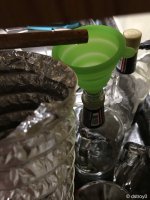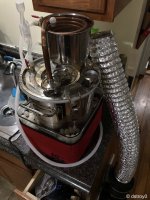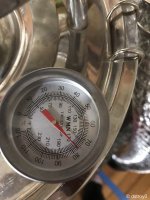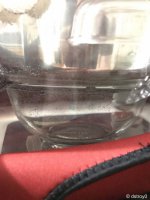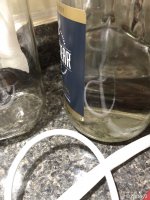You are using an out of date browser. It may not display this or other websites correctly.
You should upgrade or use an alternative browser.
You should upgrade or use an alternative browser.
Growing stuff and doing things
- Thread starter dstroy0
- Start date
dstroy0
Zeroes and Ones
do they just explode when that tap root hits the bottom and has that constant feed available?
They usually grow a shitload faster as soon as I put them in here, but this ones feed solenoid has been fuckey since it was transplanted and is just now starting to take off on account of it operating "reliably" now.
Blackbeard
In Bloom
The column char limit will depend on which SQL server you are running. If you are running MYSQL then 64 characters is the limit for columns. MYSQL Doc. If you are running MS SQL Server then it apparently depends on which driver you are using,It could be described as a json deserializer I think? I'm no expert.
in a valid json you can make a key reference the python equivalent of a dict so it will prepend that key to the child keys inside like this
ENV:{A1:{CO2:0}} to ->ENV_A1_CO2<- legal column name and bind that to its value "0"
then, say you get a different message it will add that column no problem
but the depth of the json doesn't matter, each level into the json is an underscore in the column name, so it is scalable up to the allowed column char limit and I don't know shit about SQL either so I'm surprised this works
-MSSQL Doc."When the Microsoft Access or Microsoft Excel driver is used, column names are limited to 64 characters, and longer names generate an error. When the Paradox driver is used, the maximum column name is 25 characters. When the Text driver is used, the maximum column name is 64 characters, and longer names are truncated."
Your naming convention seems pretty tight, so you shouldn't have any problems with column char limit. But are you just inserting all your data in one row in one table? Assuming ENV is your ENVironment, being a base for the naming and the outer most object (or like a container). Then it looks like you are naming your environments A1, A2, etc. and then you have your meat and potatoes for each env: CO2, TDS, RH, etc. Is this accurate? If it is you might want to make a table for each environment, add all your readings as columns and have your primary key be the DATE.
I assume if you are writing to a DB you will be wanting to track data and be able to make reports, this would seem easier to deal with. Hope it helps.
Though I'm only on page 3 here and with 17 pages, for all I know you've got a completely different setup by now lol.
-BB
dstroy0
Zeroes and Ones
Thank youThe column char limit will depend on which SQL server you are running. If you are running MYSQL then 64 characters is the limit for columns. MYSQL Doc. If you are running MS SQL Server then it apparently depends on which driver you are using,
-MSSQL Doc.
Your naming convention seems pretty tight, so you shouldn't have any problems with column char limit. But are you just inserting all your data in one row in one table? Assuming ENV is your ENVironment, being a base for the naming and the outer most object (or like a container). Then it looks like you are naming your environments A1, A2, etc. and then you have your meat and potatoes for each env: CO2, TDS, RH, etc. Is this accurate? If it is you might want to make a table for each environment, add all your readings as columns and have your primary key be the DATE.
I assume if you are writing to a DB you will be wanting to track data and be able to make reports, this would seem easier to deal with. Hope it helps.
Though I'm only on page 3 here and with 17 pages, for all I know you've got a completely different setup by now lol.
-BB
Now it’s split into relational tables and each table index is a Unix timestamp that is contained in every json from the microcontroller. The column names are shorter now that the tables are split, and there are no null inserts in frequently used tables and I have plans to split further but it’s really not super necessary right now. That was my plan from the beginning but I wasn’t sure how to execute until I got more familiar with both sql and python.
If you’ve got more ideas that’s cool I’d like to hear them. Some other people have helped me a lot here too there’s lots of knowledge here.
Buck5050
Underground Chucker
damn near flatlinedthe environment is so stable.
dstroy0
Zeroes and Ones
Yeah I think it was the feed solenoid voltage, should be fixed. Fingers crossed, but I think so cause the new stuff looks normal.Yo D!
Do you know why the Lemon Royale is yellowing some, this round?
Buck5050
Underground Chucker
Yeah I think it was the feed solenoid voltage
If I remember correctly you switch up to the 2-part MegaCrop. If my PH swings out of range with that stuff I get a bit of yellowing and some slimmer blades on new growth. Just some food for thought.

dstroy0
Zeroes and Ones
That's very specific. The solenoid was inaccurately dosing due to wrong control voltages? or was the setting not right?
If I remember correctly you switch up to the 2-part MegaCrop. If my PH swings out of range with that stuff I get a bit of yellowing and some slimmer blades on new growth. Just some food for thought.
Like they weren’t opening properly and a lot of the time they wouldn’t open at all
Blackbeard
In Bloom
Thank you
Now it’s split into relational tables and each table index is a Unix timestamp that is contained in every json from the microcontroller. The column names are shorter now that the tables are split, and there are no null inserts in frequently used tables and I have plans to split further but it’s really not super necessary right now. That was my plan from the beginning but I wasn’t sure how to execute until I got more familiar with both sql and python.
If you’ve got more ideas that’s cool I’d like to hear them. Some other people have helped me a lot here too there’s lots of knowledge here.
Data validation, try/catch blocks, error handling, recursion... You might be learning python, but you definitely been in the saddle before. Nice jobHere's that python script I'm working on
Code:#! /usr/bin/python3 import serial import json import sqlite3 from datetime import datetime #specify database db_conn = sqlite3.connect('/home/pi/Desktop/python_scripts/sensor.db') #constants BAUD_RATE = 500000 RAW_INPUT_STRING_SLICE_START = 12 #figure out if the object is a valid json def is_json(myjson): try: #leverage json.loads to tell us what's wrong with the json, if anything json_object = json.loads(myjson) except ValueError as e: #useful error report print('ERROR is_json() :',e,"for object :") print(myjson,"\n") return False return True #only pass valid json to this func def flatten_json(nested_json): """ Flatten json object with nested keys into a single level. Args: nested_json: A nested json object. Returns: The flattened json object if successful, None otherwise. """ out = {} def flatten(x, name=''): if type(x) is dict: for a in x: flatten(x[a], name + a + '_') elif type(x) is list: i = 0 for a in x: flatten(a, name + str(i) + '_') i += 1 else: out[name[:-1]] = x flatten(nested_json) return out #pass valid json to this func def commit_json(json_data): #normalize and flatten json_data = json.loads(json_data) json_data = flatten_json(json_data) #var columns = [] values = [] c = db_conn.cursor() #pull existing columns from db db_columns = [i[1] for i in c.execute('PRAGMA table_info(myTable)')] #get key:value pairs for column, value in json_data.items(): #slice the first 12 char off each column name, which is the controller version in my schema if str(column[RAW_INPUT_STRING_SLICE_START:]) not in db_columns: try: add_column = "ALTER TABLE myTable ADD COLUMN {0}".format(" TEXT".join((str(column[RAW_INPUT_STRING_SLICE_START:]),))) #print db query for verif print(add_column) #add unknown column c.execute(add_column) except ValueError as e: print("ERROR commit_json()->add_column : ", e) columns.append(str(column[RAW_INPUT_STRING_SLICE_START:])) values.append(str(value)) #uncomment for num bindings #print(len(columns)-1) #uncomment for flat key:value pairs #print(columns, values) create_query = "create table if not exists myTable({0})".format(" text, ".join(columns)) insert_query = "INSERT INTO myTable({0}) VALUES(?{1})".format(", ".join(columns), ",?" * (len(columns)-1)) #uncomment for create_query format verif #print(create_query) #uncomment for insert_query format verif print(insert_query) #print insert start time print("insert has started at " + str(datetime.now())) #make the table if it doesnt exist c.execute(create_query) #insert rows into database c.executemany(insert_query, (values,)) #empty out values values.clear() #commit changes to db db_conn.commit() #close db cursor c.close() #print insert finish time print("insert has completed at " + str(datetime.now()) + "\n") def main(): #UART port ser = serial.Serial('/dev/ttyS0', BAUD_RATE, timeout=5) #open the serial port #sentinel var = 1 #main loop while var == 1: #read from stream into line line = ser.readline() #remove byte type and carriage return line = line.decode('ascii') line = line.rstrip() #wrap object line = '[' + line + ']' #uncomment to view raw object #print(line) #print 'line' #test if json in 'line' is valid json if is_json(line) == True: try: commit_json(line) except ValueError as e: print('ERROR main() :',e) #run main()
dstroy0
Zeroes and Ones
Data validation, try/catch blocks, error handling, recursion... You might be learning python, but you definitely been in the saddle before. Nice job
Hey thanks, I'm pretty new to coding in general. I started learning with c++ in 2017.
dstroy0
Zeroes and Ones
Yeah D, she's greenin' up and about to blow up!
oh yeahhhhhh that's the plan!















